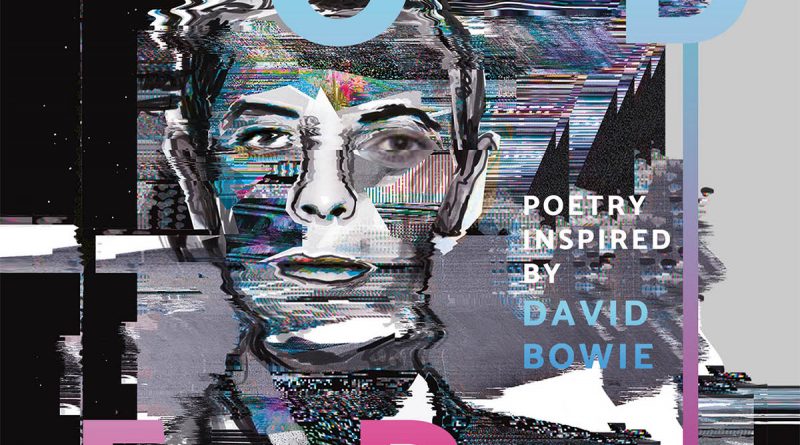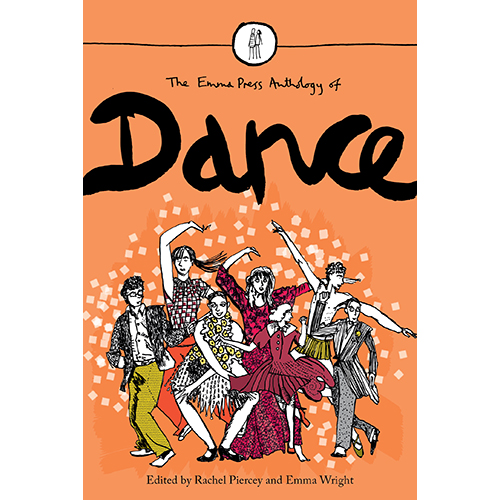Cold Fire: Poetry inspired by David Bowie edited by Alex Bell and John Canfield
-Reviewed by Charles Whalley–
In the 1973 concert captured on film for the documentary Ziggy Stardust and the Spiders from Mars, David Bowie performs his cover of Jacques Brel’s ‘My Death’, accompanied by his acoustic guitar. As he sings the chorus for the last time, he halts before the final word:
But whatever lies behind the door
There is nothing much to do
Angel or devil, I don’t care
For in front of that door there is…
In the pause, a fan, and then another, then a chorus of them, yells “me!” Bowie smiles and ends the song. Encouraged by his self-mythology, his fans have always related to Bowie best through his deaths. A few numbers later in the concert, he announces that it is “the last show we’ll ever do”, retiring the character Ziggy Stardust forever with a final performance of ‘Rock n’ Roll Suicide’: “I’ve had my share, I’ll help you with the pain…./You’re not alone!”
Bowie’s fascination with personae extended to their termination. As with Ziggy, torn apart, the album’s story goes, by his fans on stage, his characters’ deaths were inevitable culminations of their relationship to their audience, messianic sacrifices, symbolic deaths in doomed universes, an acknowledgement that the characters were no longer his anyway, that their purpose was too great for one man’s living. He discarded and assumed masks with such impatience, embraced and alienated audiences, that his death last year, immediately after the release of Blackstar (2016), seemed familiar yet incredible. His fans, his music, had rehearsed his disappearance many times; only its finality was new. Unlike ‘Lazarus’, the title of his requiem for himself on Blackstar, this time he’ll not be back.
So here is a pamphlet of 18 poems “inspired by” one of the greatest musicians of the 20th century, crowdfunded and published by The Rialto. The list of assembled contributors is exciting in itself. Each poem engages with an album from an abridged discography, from his first (David Bowie (1969)) to his last. All the old favourites are there, including the full run from 1969 to 1983 (with The Man Who Sold the World featuring twice) plus a few selections thereafter. (Remarkably, it would seem no one was inspired by, for instance, Tonight or Buddha of Suburbia.) Although each poem is different, this inspiration tends to take one of two forms: either the poems imaginatively place themselves in Bowie’s universe, attempting a recreation or engagement with a Bowie or a Bowie-like figure, or they show the music’s place in the soundtrack to life. Either the poem is up on stage, caught up in the magic, or it is sat in the stalls, reflecting on what this magic meant.
Chrissy Williams’ expert ‘Let’s Dance’, for instance, is of the former camp. It creates a little dizzy pocket of the Bowie-esque, where an apparent discussion of the album, littered with lyrics and addressed maybe to Bowie, becomes an exhortation to the reader. The surface references are spun into something earnest and almost philosophical. For example:
If you say run, we’ll run with you
into the mediocre moonlight, but, first,
let’s depart this universally acclaimed
pre-ruination life with a moment of
exuberance, marking it with dance,
marking it with song
Whilst substituting Bowie’s “serious moonlight” with “mediocre” might seem a sly judgement on his abandonment of the avant garde, there is real sensitivity and generosity in how the poem takes up Let’s Dance’s underlying pessimism, with Bowie’s translation of his habitual apocalypticism into a command to dance. The poem responds to the music in a way that energises both. Williams’ poem is sensitive enough that we appreciate Let’s Dance anew.
Similar, equally entertaining responses are given by Kirsten Irving, Dai George, Rishi Dastidar, Francine Elena and Jane Yeh, amongst others, taking up the aesthetic and ideas of their allocated album, and portraying or ventriloquising a Bowie figure (if not the man himself). The Bowie-esque in these poems seems to have arisen from an irresistible desire to put on the mask. We’re told in the Introduction to the pamphlet that it came about, appropriately, from a David Bowie poetry and karaoke night, with costume “encouraged”. Bowie is so suitable for karaoke because he was always at it himself. He never only sings, but performs: the alien rockstar messiah; the ‘translucent white’ soul singer; the gaunt aristocratic occultist; the “incurably ill” DJ who ‘is what he plays’. It seems so possible that we too can paint on Aladdin Sane’s flash, and wrap Bowies around ourselves.
Besides the karaoke, we have responses to Bowie, or discussions of Bowie, or memories of what Bowie meant at a time: Melissa Lee-Houghton has Bowie as the soundtrack for “the unstable amongst us”; Simon Barraclough remembers and reenacts listening to Bowie’s narration of Peter and the Wolf “in music class/or was it story time at the end of the day?”; Niall O’Sullivan ruminates on a relationship through (the chronically under-appreciated) 1. Outside, via its appearances in Lost Highway and Se7en; Amy Key and Luke Kennard work on text around Bowie, making erasures and anagrams from a review and a track listing respectively, a response appropriate for an artist who wrote many of his lyrics through Burroughsian cut-ups. These are all, I suppose, poets working to their own strengths, and it’s entertaining how varied they all are.
John Canfield closes the pamphlet in a reflective vein, with a sonnet on Blackstar, beginning:
Blackstar, I would thou were of lesser art,
for at the last, once more, you showed a light
that we could never hope to have, like Mozart,penned your Requiem.[…]
This invocation of the traditions of requiem and elegy underlines the intent of the pamphlet, but also its main constraint. As Carol Ann Duffy has demonstrated of late, it is difficult for occasional verse, or poetry written to a task, to be good, to escape its occasion. Many of the poems here are entertaining performances in their author’s usual mode – able acts of evocation – rather than challenging poems in their own right; those familiar with the contributors’ work will see some of these poems as exercises in ideas that have worked better elsewhere. But, as Canfield’s poem notes, perhaps the biggest difficulty to those poets writing about Bowie after his death is that he got there first, that he had been working on it for years. He is a perfect and an impossible subject for such a pamphlet, because he was always his art’s favourite subject. Even so, there are few places where you’ll find such an impressive range of writers addressing such a rich subject.




